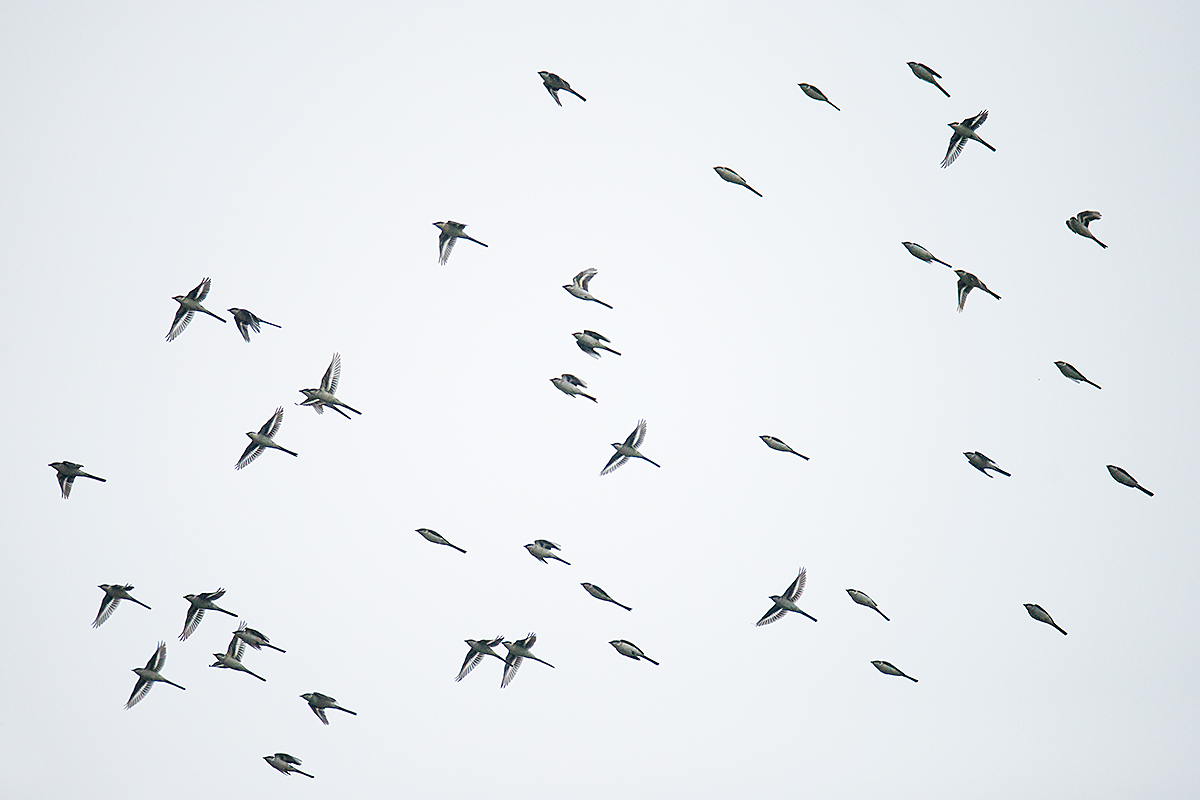

No minivet ranges as far north (to Sakhalin Island) as Ashy Minivet Pericrocotus divaricatus, and none migrates as far. In China, breeds Inner Mongolia, Heilongjiang, and Jilin and passes through eastern third of country to wintering grounds in India, Southeast Asia (to Borneo and Sumatra), and Philippines. May breed Taiwan. HABITAT & BEHAVIOR Canopy of broadleaf forests, where searches for insects; on migration occurs in more varied types of woodland. Perches upright, scanning surroundings for prey. Often in flocks, conspecific as well as mixed-species. ID & COMPARISON Male mainly grey above, with white forehead and black lores, midcrown, hindcrown, nape, and ear coverts. Flight feathers mostly black with white basal wing bar; grey fringes to primaries and tertials. Central tail feathers black; rest of tail mostly white with broad black base. Female has less white on forehead and grey mid- and hindcrown, nape, and ear coverts. Both sexes white below. Swinhoe’s Minivet P. cantonensis has brown-tinged upperparts and underparts. White on forehead of male Swinhoe’s extends further back, especially above eye, and black on head of Ashy is replaced by dark grey (except lores). Bar-winged Flycatcher-shrike is smaller and has conspicuous white bar on wing and a black forehead. Juvenile Ashy like female but browner; difficult to distinguish juvenile Ashy from juvenile Swinhoe’s. BARE PARTS Thick bill black; feet black. VOICE High-pitched trill, repeated at intervals, similar to Swinhoe’s Minivet, but longer. — Craig Brelsford
THE CUCKOOSHRIKES OF CHINA
shanghaibirding.com covers every species in the family Campephagidae in China. Click any link:
Grey-chinned Minivet Pericrocotus solaris
Short-billed Minivet P. brevirostris
Long-tailed Minivet P. ethologus
Scarlet Minivet P. speciosus
Ashy Minivet P. divaricatus
Swinhoe’s Minivet P. cantonensis
Rosy Minivet P. roseus
Large Cuckooshrike Coracina macei
Black-winged Cuckooshrike Lalage melaschistos
ACKNOWLEDGEMENTS
Daniel Bengtsson served as chief ornithological consultant for Craig Brelsford’s Photographic Field Guide to the Birds of China, from which this species description is drawn.
